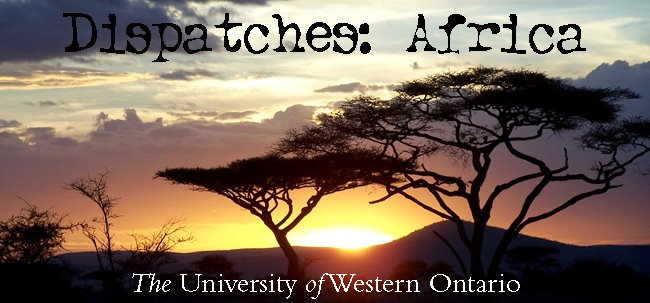 |
| A skeleton at Nairobi National Museum. |
To avoid an afternoon spent dancing with raindrops, we have opted instead to roam the vast halls of Nairobi National Museum, which has left me astounded at the history set out before me.
All around, children scramble to pose for photos in front of murals depicting pastoral scenes, or beside artifacts that testify to the nation’s history. Tying the past to the future, a vendor has painted their faces with tribal markings, and their excited cries echo through monuments of their – and our – history.
I am not the only one giddy.
Standing here, it is abundantly obvious: there’s Canadian and European history, which remain significant, but pale at their ability to trace the roots of civilization, which began just up the road. The past in front of us may be local, but its impact is much farther reaching in terms of our understandings of human evolution.
In room after room, this history becomes tangible as ancient skulls rest, poised and unstaring in their hollowness. Bone fragments are epoxied together like jagged human jigsaw puzzles – as is history itself. It is completely humbling to consider the insignificance of this passing moment in the context of millions of years.
It resonates particularly strongly with me that many of these artifacts are in fact original, rather than plaster cast reproductions of some of the earliest origins of species.
And then, in one moment, my eyes widened in excitement – my mouth, similarly agape. I was staring at the skeleton of the famous, 3.2-million-year-old ‘Lucy,’ an early hominid I had read about as a child in National Geographic, and subsequently studied in school. Nondescript in a plain case with other artifacts, she seemed to shrug at her placement: "That's just how much history there is here."
I was rendered speechless, so I simply basked in wonder and in my love for this continent.


No comments:
Post a Comment